2018-09-20 - Nº 177
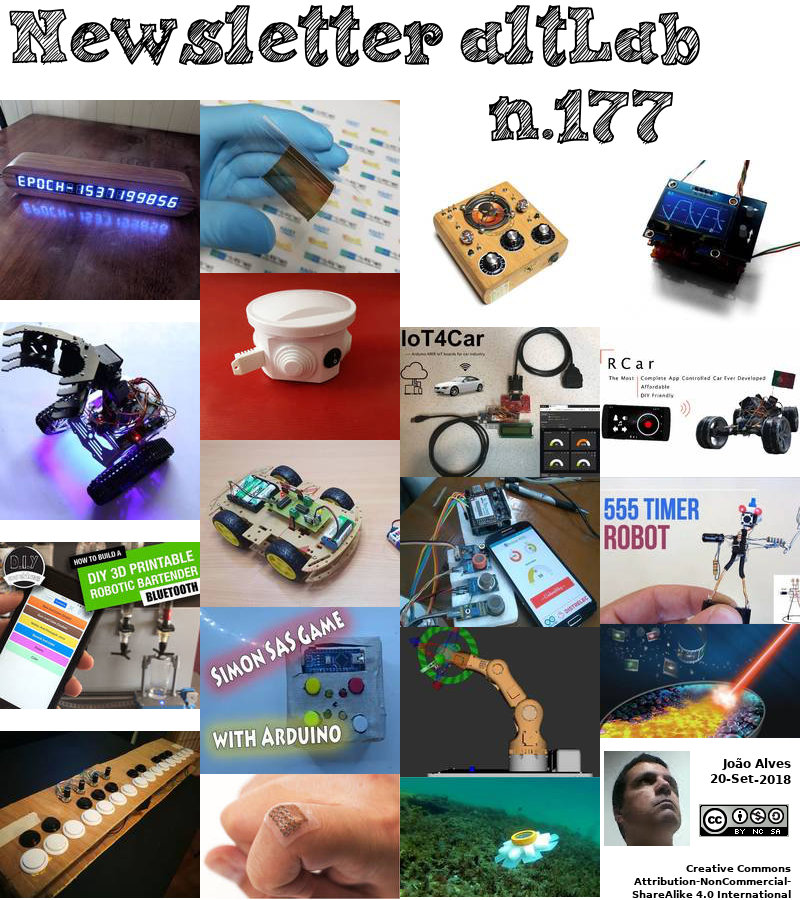
Editorial
Esta é a Newsletter Nº 177 que se apresenta com o mesmo formato que as anteriores. Se gostar da Newsletter partilhe-a!
Todas as Newsletters encontram-se indexadas no link.
Esta Newsletter tem os seguintes tópicos:
Faz hoje anos que nascia, em 1842, James Dewar. Este Químico e físico escocês reduziu a linha que separa a física da química e avançou a fronteira de pesquisa em vários campos na mudança do século XX. Ele deu palestras e seu estudo de fenómenos de baixa temperatura implicava fazer o frasco de Dewar, um frasco isolante de parede dupla de seu próprio desenho, criando um vácuo entre as duas camadas prateadas de aço ou vidro (1892), o que levou à criação da Garrafa térmica doméstica. Em Junho de 1897, o The Scientific American informou que "Dewar acaba de liquidificar o flúor a uma temperatura de -185 ºC". Ele obteve hidrogénio líquido em 1898. Dewar também inventou cordite, a primeira pólvora sem fumo.
Nesta semana que passou ficámos a saber que os cientista identificaram três causas para o desvio do eixo de rotação da Terra. A Terra não é uma esfera perfeita. Quando gira no seu eixo de rotação - uma linha imaginária que passa pelos pólos norte e sul - ele oscila e desvia-se. Estes movimentos do eixo de rotação são cientificamente referidos como "movimento polar". As medições para o século XX mostram que o eixo de rotação se desloca cerca de 10 centímetros por ano. Ao longo de um século, isto é mais de 10 metros. Utilizando dados observados e baseados em modelos que abrangem todo o século XX, os cientistas da NASA identificaram pela primeira vez três processos amplamente categorizados como responsáveis por esse desvio - a perda de massa contemporânea na Groenlândia, a recuperação glacial e a convecção do manto.
Na Newsletter desta semana apresentamos diversos projetos de maker assim como alguns modelos 3D que poderão ser úteis. São apresentadas as revistas hackspace nº11 e a revista Hello World nº6.
 João Alves ([email protected])
João Alves ([email protected])
O conteúdo da Newsletter encontra-se sob a licença  Creative Commons Attribution-NonCommercial-ShareAlike 4.0 International License.
Creative Commons Attribution-NonCommercial-ShareAlike 4.0 International License.
Novidades da Semana

Scientists ID Three Causes of Earth's Spin Axis Drift
"A typical desk globe is designed to be a geometric sphere and to rotate smoothly when you spin it. Our actual planet is far less perfect -- in both shape and in rotation. Earth is not a perfect sphere. When it rotates on its spin axis -- an imaginary line that passes through the North and South Poles -- it drifts and wobbles. These spin-axis movements are scientifically referred to as "polar motion." Measurements for the 20th century show that the spin axis drifted about 4 inches (10 centimeters) per year." [...]
Outras Notícias

Mbed OS 5.9.7 released
"We are pleased to announce the Mbed OS 5.9.7 release is now available. This is the latest patch release based on the feature set that Mbed OS 5.9 introduces. Summary This is the last patch release for mbed-os-5.9. We have added target support for the following boards in this release: SDT64B SDT8195B SDT32620B SDT32625B SDT51822B SDT52832B MOTE_L152RC We have fixed a bug where an exception could be thrown when trying to allocate memory for stats logging (7712). There were a couple of issues with the NRF52 (7707 and 7743) that have been fixed. We have updated the SPI HAL driver for the MIMXRT1050_EVK." [...]

CRA and WeRise Develop "Livingboard," a Motherboard for Instant Open-Source Housing
"“Livingboard” is the prototype of a portable “motherboard system” to improve housing conditions in rural parts of India. A collaboration between international design and innovation practice Carlo Ratti Associati (CRA) and Indian non-profit organization WeRise, “Livingboard” encourages an open-source approach to design, allowing people to build their own dwellings on top of a prefabricated core. The first pilot is currently under study for development in the Indian state of Karnataka. “Livingboard is a flexible ‘core’ system to support the development of housing initiatives in any rural area of the world. This core must be positioned horizontally, constituting the floor of a 12-square meter room (3x4m). It can provide, depending on the geography and infrastructure of the region in question, water storage and distribution, water treatment through filtration, waste management, heating, batteries to accumulate PV-generated electricity and wi-fi connectivity." [...]

Ampere Announces Availability of eMAG for Hyperscale Cloud Computing and Unveils Aggressive, Multi-Generation Roadmap
"Ampere™, which is developing an Arm®-based server platform for the future of hyperscale cloud and edge computing, today announced availability of its first generation Armv8-A 64-bit processors for data centers. Already selected by Lenovo and several ODMs, the Ampere eMAG™ processors deliver excellent total cost of ownership (TCO) value, high-performance compute, high memory capacity, and rich I/O to address cloud workloads including big data, web tier and in-memory databases. Ampere also unveiled its multi-generation roadmap, which includes building its next generation product on 7nm with multi-socket and single socket options, which will be available in 2019. “We have made tremendous progress since our launch eight months ago, continuing to execute on our first and second generation products. More importantly, we are ahead of schedule on building out a robust, multi-product roadmap that meets the performance and features demanded by the cloud computing ecosystem,” said Renee James, chairman and CEO of Ampere. “We are partnering with world-class OEMs like Lenovo and several ODMs to address the unique design requirements for our cloud customers and meet their total cost and performance targets.” Product Benefits and Features The Ampere eMAG platform offers significant total cost of ownership (TCO) value with competitive performance per dollar and performance per watt for high volume mainstream servers and for servers used for edge, storage and web applications." [...]
Ciência e Tecnologia
Shrinking semiconductor lasers to the nanoscale
"An ultracompact laser has been made using nanoscale semiconductor columns A tiny laser comprising an array of nanoscale semiconductor cylinders (see image) has been made by an all-A*STAR team1. This is the first time that lasing has been achieved in non-metallic nanostructures, and it promises to lead to miniature lasers usable in a wide range of optoelectronic devices. Microscale lasers are widely used in devices such as CD and DVD players. Now, optical engineers are developing nanoscale lasers — so small that they cannot be seen by the human eye. A promising method is to use arrays of tiny structures made from semiconductors with a high refractive index. Such structures act as tiny antennas, resonating at specific wavelengths." [...]
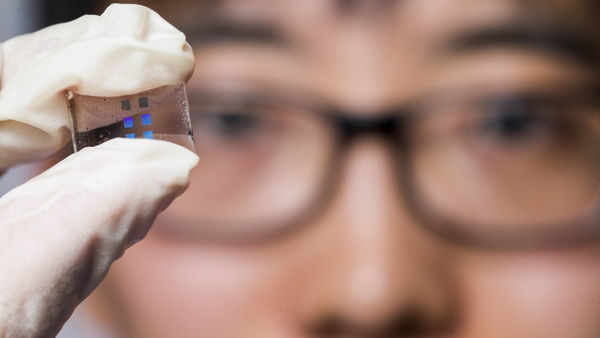
Tiny camera lens may help link quantum computers to network
"An international team of researchers led by ANU has invented a tiny camera lens, which may lead to a device that links quantum computers to an optical fibre network. Quantum computers promise a new era in ultra-secure networks, artificial intelligence and therapeutic drugs, and will be able to solve certain problems much faster than today's computers. The unconventional lens, which is 100 times thinner than a human hair, could enable a fast and reliable transfer of quantum information from the new-age computers to a network, once these technologies are fully realised. The device is made of a silicon film with millions of nano-structures forming a metasurface, which can control light with functionalities outperforming traditional systems. Associate Professor Andrey Sukhorukov said the metasurface camera lens was highly transparent, thereby enabling efficient transmission and detection of information encoded in quantum light. "It is the first of its kind to image several quantum particles of light at once, enabling the observation of their spooky behaviour with ultra-sensitive cameras," said Associate Professor Sukhorukov, who led the research with a team of scientists at the Nonlinear Physics Centre of the ANU Research School of Physics and Engineering." [...]
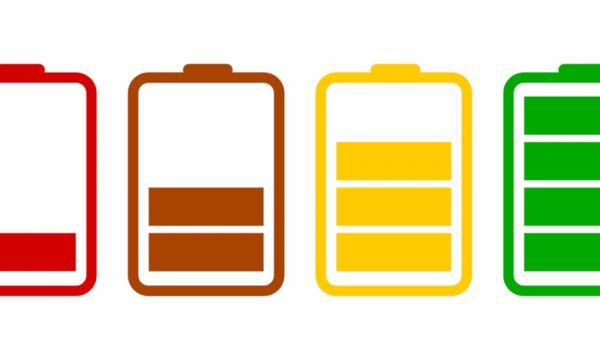
A New Dimension for Batteries
"Engineers at the University of Maryland have created a thin battery, made of a few million carefully constructed “microbatteries” in a square inch. Each microbattery is shaped like a very tall, round room, providing much surface area – like wall space – on which nano-thin battery layers are assembled. The thin layers together with large surface area produces very high power along with high energy. It is dubbed a “3D battery” because each microbattery has a distinctly 3D shape. These 3-D batteries push conventional planar thin-film solid state batteries into a third dimension. Planar batteries are a single stack of flat layers serving the roles of anode, electrolyte, cathode and current collectors." [...]

Laser Sintering Optimized for Printed Electronics
"New study sheds (laser) light on the best means of laying down thin-film circuitry. Printed electronics use standard printing techniques to manufacture electronic devices on different substrates like glass, plastic films, and paper. Interest in this area is growing because of the potential to create cheaper circuits more efficiently than conventional methods. A new study by researchers at Soonchunhyang University in South Korea, published in AIP Advances, from AIP Publishing, provides insights into the processing of copper nanoparticle ink with green laser light. Kye-Si Kwon and his colleagues previously worked with silver nanoparticle ink, but they turned to copper (derived from copper oxide) as a possible low-cost alternative. Metallic inks composed of nanoparticles hold an advantage over bulk metals because of their lower melting points." [...]
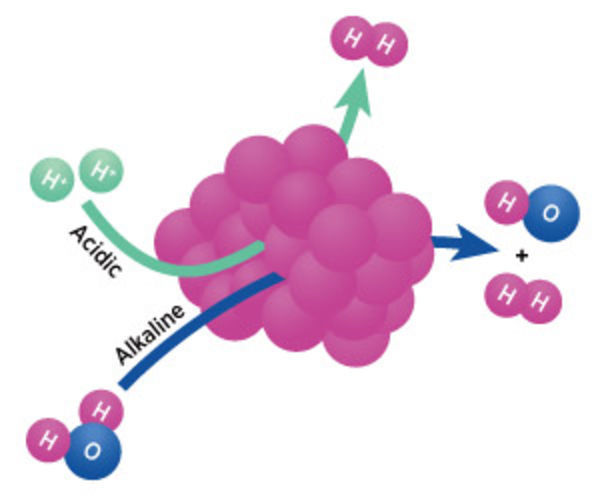
Stepping up water splitting
"Cheap and accessible cobalt-based catalysts could fast-track the industrial-scale production of hydrogen from water. A low-cost and simple alternative to expensive platinum-based catalysts that generate hydrogen from water could soon be available, thanks to A*STAR researchers. A team from A*STAR’s Institute of Materials Research and Engineering has developed a one-step approach to synthesize cobalt phosphides that exhibit good electrochemical activity in the hydrogen evolution reaction (HER). “Unlike the expensive and scarce platinum-based catalysts, these phosphorus-functionalized cobalt catalysts are particularly promising because of their long-term stability and suitability to large scale industrial implementation,” explains Yun Zong, who led the team with Zhaolin Liu. Hydrogen is an energy-dense, clean and renewable fuel source that plays a key role in many industrial processes, such as the production of ammonia as well as the processing and refining of fossil fuels. Yet, it is predominantly produced through the steam reforming of natural gas, a high-temperature extraction from hydrocarbons that emits carbon dioxide in large quantities." [...]
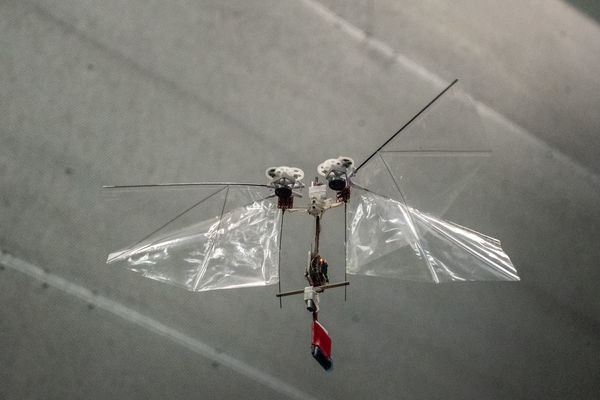
Novel flying robot mimics rapid insect flight
"A novel insect-inspired flying robot, developed by TU Delft researchers from the Micro Air Vehicle Laboratory (MAVLab), has been presented in Science (14 September 2018). Experiments with this first autonomous, free-flying and agile flapping-wing robot – carried out in collaboration with Wageningen University & Research – improved our understanding of how fruit flies control aggressive escape manoeuvres. Apart from its further potential in insect flight research, the robot’s exceptional flight qualities open up new drone applications. Flying animals both power and control flight by flapping their wings. This enables small natural flyers such as insects to hover close to a flower, but also to rapidly escape danger, which everyone has witnessed when trying to swat a fly. Animal flight has always drawn the attention of biologists, who not only study their complex wing motion patterns and aerodynamics, but also their sensory and neuro-motor systems during such agile manoeuvres." [...]

Detangling DNA replication
"Researchers identify an essential protein that helps enzymes relax overtwisted DNA so each strand can be copied during cell division. DNA is a lengthy molecule — approximately 1,000-fold longer than the cell in which it resides — so it can’t be jammed in haphazardly. Rather, it must be neatly organized so proteins involved in critical processes can access the information contained in its nucleotide bases. Think of the double helix like a pair of shoe laces twisted together, coiled upon themselves again and again to make the molecule even more compact. However, when it comes time for cell division, this supercoiled nature makes it difficult for proteins involved in DNA replication to access the strands, separate them, and copy them so one DNA molecule can become two. Replication begins at specific regions of the chromosome where specialized proteins separate the two strands, pulling apart the double helix as you would the two shoe laces." [...]
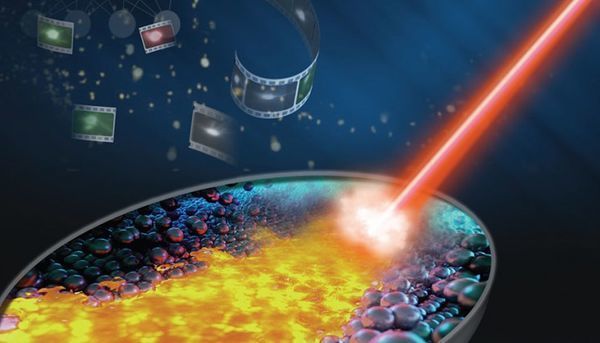
LLNL explores machine learning to prevent defects in metal 3D-printed parts in real time
"For years, Lawrence Livermore National Laboratory engineers and scientists have used an array of sensors and imaging techniques to analyze the physics and processes behind metal 3D printing in an ongoing effort to build higher quality metal parts the first time, every time. Now, researchers are exploring machine learning to process the data obtained during 3D builds in real time, detecting within milliseconds whether a build will be of satisfactory quality. In a paper published online Sept. 5 by Advanced Materials Technologies, a team of Lab researchers report developing convolutional neural networks (CNNs), a popular type of algorithm primarily used to process images and videos, to predict whether a part will be good by looking at as little as 10 milliseconds of video. “This is a revolutionary way to look at the data that you can label video by video, or better yet, frame by frame,” said principal investigator and LLNL researcher Brian Giera. “The advantage is that you can collect video while you’re printing something and ultimately make conclusions as you’re printing it. A lot of people can collect this data, but they don’t know what to do with it on the fly, and this work is a step in that direction.” Often, Giera explained, sensor analysis done post-build is expensive and part quality can be determined only long after." [...]
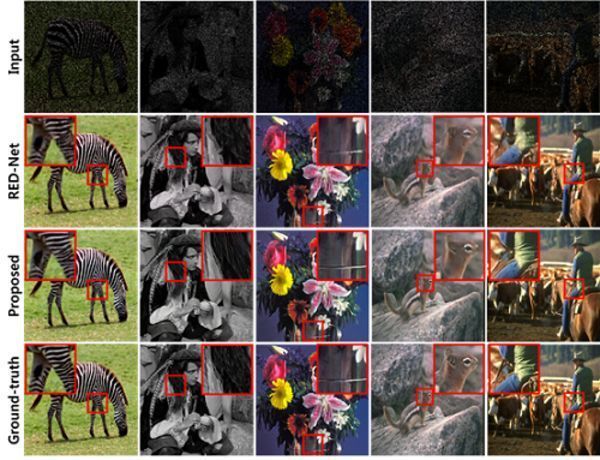
KAIST Reveals Mathematical Principle behind AI's 'Black Box'
"A KAIST research team identified the geometrical structure of artificial intelligence (AI) and discovered the mathematical principles of highly performing artificial neural networks, which can be applicable in fields such as medical imaging. Deep neural networks are an exemplary method of implementing deep learning, which is at the core of the AI technology, and have shown explosive growth in recent years. This technique has been used in various fields, such as image and speech recognition as well as image processing. Despite its excellent performance and usefulness, the exact working principles of deep neural networks has not been well understood, and they often suffer from unexpected results or errors. Hence, there is an increasing social and technical demand for interpretable deep neural network models. To address these issues, Professor Jong Chul Ye from the Department of Bio & Brain Engineering and his team attempted to find the geometric structure in a higher dimensional space where the structure of the deep neural network can be easily understood." [...]
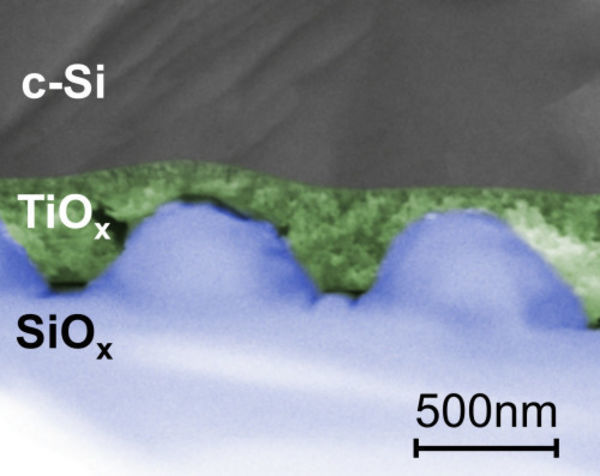
Patented nanostructure for solar cells: Rough optics, smooth surface
"Thin-film solar cells made of crystalline silicon are inexpensive and achieve efficiencies of a good 14 percent. However, they could do even better if their shiny surfaces reflected less light. A team led by Prof. Christiane Becker from the Helmholtz-Zentrum Berlin (HZB) has now patented a sophisticated new solution to this problem. "It is not enough simply to bring more light into the cell," says Christiane Becker. Such surface structures can even ultimately reduce the efficiency by impairing the electronic properties of the material. Rough and smooth The idea that David Eisenhauer worked out as part of his doctorate in Becker's team sounds quite simple, but it requires a completely new approach: to produce a structure that behaves "optically rough" and scatters the light, but at the same time provides a "smooth" surface on which the silicon layer (the most important layer of the solar cell) can grow with virtually no defects." [...]

Google just gave control over data center cooling to an AI
"In a first, Google is trusting a self-taught algorithm to manage part of its infrastructure. Google revealed today that it has given control of cooling several of its leviathan data centers to an AI algorithm. Over the past couple of years, Google has been testing an algorithm that learns how best to adjust cooling systems—fans, ventilation, and other equipment—in order to lower power consumption. This system previously made recommendations to data center managers, who would decide whether or not to implement them, leading to energy savings of around 40 percent in those cooling systems. Now, Google says, it has effectively handed control to the algorithm, which is managing cooling at several of its data centers all by itself. “It’s the first time that an autonomous industrial control system will be deployed at this scale, to the best of our knowledge,” says Mustafa Suleyman, head of applied AI at DeepMind, the London-based artificial-intelligence company Google acquired in 2014." [...]
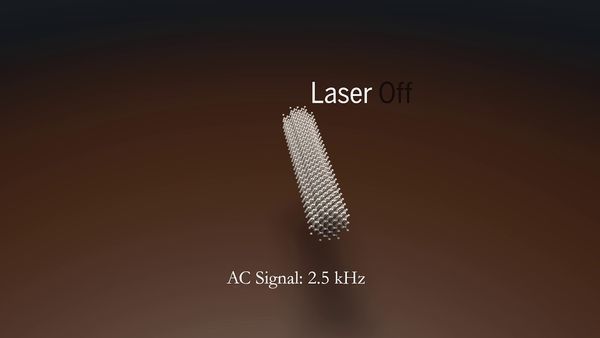
First-Ever Method for Controlling Nanomotors is Developed by UT Engineers
"In a breakthrough for nanotechnology, engineers at The University of Texas at Austin have developed the first method for selecting and switching the mechanical motion of nanomotors among multiple modes with simple visible light as the stimulus. The capability of mechanical reconfiguration could lead to a new class of controllable nanoelectromechanical and nanorobotic devices for a variety of fields including drug delivery, optical sensing, communication, molecule release, detection, nanoparticle separation and microfluidic automation. The finding, made by Donglei (Emma) Fan, associate professor at the Cockrell School of Engineering’s Department of Mechanical Engineering, and Ph.D. candidate Zexi Liang, demonstrates how, depending on the intensity, light can instantly increase, stop and even reverse the rotation orientation of silicon nanomotors in an electric field. This effect and the underlying physical principles have been unveiled for the first time. It switches mechanical motion of rotary nanomotors among various modes instantaneously and effectively. The researchers published their findings in the Sept. 14 issue of Science Advances." [...]

Machine-learning system tackles speech and object recognition, all at once
"Model learns to pick out objects within an image, using spoken descriptions. MIT computer scientists have developed a system that learns to identify objects within an image, based on a spoken description of the image. Given an image and an audio caption, the model will highlight in real-time the relevant regions of the image being described. Unlike current speech-recognition technologies, the model doesn’t require manual transcriptions and annotations of the examples it’s trained on. Instead, it learns words directly from recorded speech clips and objects in raw images, and associates them with one another. The model can currently recognize only several hundred different words and object types." [...]

Wearable ultrasound patch monitors blood pressure deep inside body
"A new wearable ultrasound patch that non-invasively monitors blood pressure in arteries deep beneath the skin could help people detect cardiovascular problems earlier on and with greater precision. In tests, the patch performed as well as some clinical methods to measure blood pressure. Applications include real-time, continuous monitoring of blood pressure changes in patients with heart or lung disease, as well as patients who are critically ill or undergoing surgery. The patch uses ultrasound, so it could potentially be used to non-invasively track other vital signs and physiological signals from places deep inside the body. A team of researchers led by the University of California San Diego describe their work in a paper published Sept. 11 in Nature Biomedical Engineering. “Wearable devices have so far been limited to sensing signals either on the surface of the skin or right beneath it." [...]

KAIST Perfectly Transfers Nanowires onto a Flexible Substrate
"Boasting excellent physical and chemical properties, nanowires (NWs) are suitable for fabricating flexible electronics; therefore, technology to transfer well-aligned wires plays a crucial role in enhancing performance of the devices. A KAIST research team succeeded in developing NW-transfer technology that is expected to enhance the existing chemical reaction-based NW fabrication technology that has this far showed low performance in applicability and productivity. NWs, one of the most well-known nanomaterials, have the structural advantage of being small and lightweight. Hence, NW-transfer technology has drawn attention because it can fabricate high-performance, flexible nanodevices with high simplicity and throughput. A conventional nanowire-fabrication method generally has an irregularity issue since it mixes chemically synthesized nanowires in a solution and randomly distributes the NWs onto flexible substrates. Hence, numerous nanofabrication processes have emerged, and one of them is master-mold-based, which enables the fabrication of highly ordered NW arrays embedded onto substrates in a simple and cost-effective manner, but its employment is limited to only some materials because of its chemistry-based NW-transfer mechanism, which is complex and time consuming." [...]
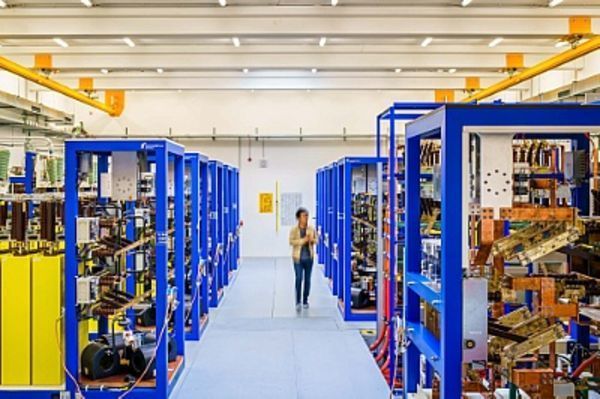
Keep cool: Researchers develop magnetic cooling cycle
"As a result of climate change, population growth and rising expectations regarding quality of life, energy requirements for cooling processes are growing much faster worldwide than for heating. Another problem that besets today's refrigeration systems is that most coolants cause environmental and health damage. A novel technology could provide a solution: refrigeration using magnetic materials in magnetic fields. Researchers at the Technische Universität (TU) Darmstadt and the Helmholtz-Zentrum Dresden-Rossendorf (HZDR) have developed the idea of a cooling cycle based on the 'magnetic memory' of special alloys. Relevant initial experimental results have now been published in the journal 'Nature Materials' (DOI: 10.1038/s41563-018-0166-6). The project is funded by the European Research Council (ERC)." [...]
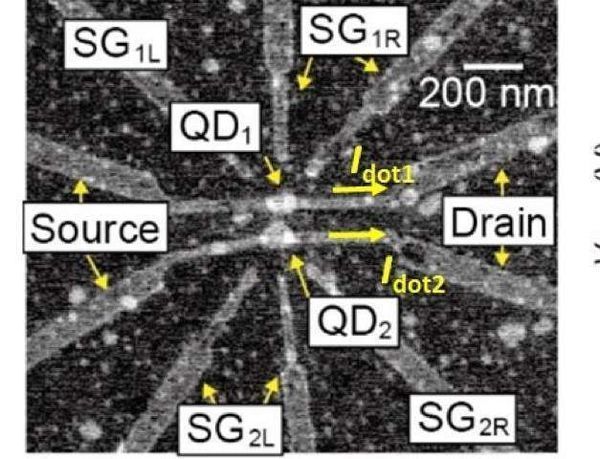
Two Quantum Dots are Better than One: Using One Dot to Sense Changes in Another
"Quantum dots are nanometer-sized boxes that have attracted huge scientific interest for use in nanotechnology because their properties obey quantum mechanics and are requisites to develop advanced electronic and photonic devices. Quantum dots that self-assemble during their formation are particularly attractive as tunable light emitters in nanoelectronic devices and to study quantum physics because of their quantized transport behavior. It is important to develop a way to measure the charge in a single self-assembled quantum dot to achieve quantum information processing; however, this is difficult because the metal electrodes needed for the measurement can screen out the very small charge of the quantum dot. Researchers at Osaka University have recently developed the first device based on two self-assembled quantum dots that can measure the single-electron charge of one quantum dot using a second as a sensor. The device was fabricated using two indium arsenide (InAs) quantum dots connected to electrodes that were deliberately narrowed to minimize the undesirable screening effect. “The two quantum dots in the device showed significant capacitive coupling,” says Haruki Kiyama." [...]
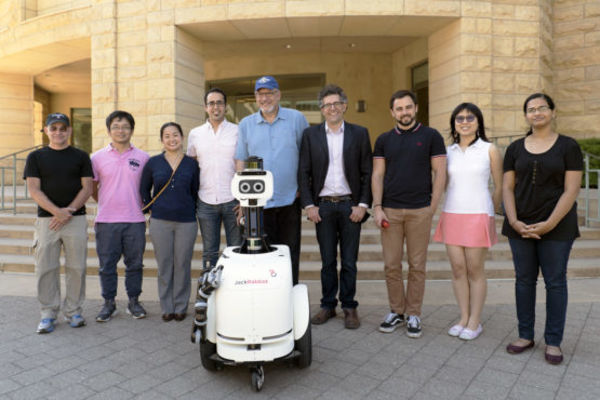
Stanford's JackRabbot 2: The polite pedestrian robot
"Like its predecessor, JackRabbot 2 is learning how to navigate safely through spaces occupied by people, following the rules of human etiquette. What it learns could help it move comfortably among us in the future. If you’ve ever been caught in the dreaded sidewalk tango, failing to gracefully maneuver around someone directly in your path, you have some idea of the challenges ahead for a Stanford University robot, JackRabbot 2. With a squat body, friendly eyes and a two-fingered arm, JackRabbot 2 is tasked with learning all it can about moving with, around and between humans. The new robot – an update of the stylish JackRabbot – is part of a field of research interested in getting robots closer to humans so they can work as generalized personal helpers: delivering packages, cleaning house and grabbing a snack from the fridge. “The JackRabbot project is developing a robot that doesn’t just navigate an environment by following the behavior of a traditional robotic system, such as going from Point A to Point B and avoiding bumping into obstacles,” said Silvio Savarese, associate professor of computer science, who leads the JackRabbot project." [...]
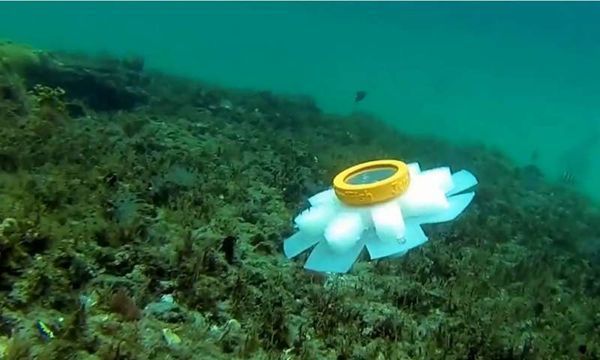
Meet the new guardians of the ocean - robot jellyfish
"New robot jellyfish could be the key to monitoring and caring for fragile parts of the world's oceans without damaging them. The robots were developed by a team of US scientists, from Florida Atlantic University (FAU) and the US Office of Naval Research. They were designed to be able to swim freely, steer from side to side, and swim through narrow openings. The researchers set out their findings today in the journal Bioinspiration and Biomimetics. Corresponding author Dr. Erik Engeberg, from FAU, said: "Studying and monitoring fragile environments, such as coral reefs, has always been challenging for marine researchers. Soft robots have great potential to help with this." [...]

Introducing the 'Smart Mirror'
"New chip-sized device could help manufacturers measure laser power in real time. Lasers play roles in many manufacturing processes, from welding car parts to crafting engine components with 3D printers. * To control these tasks, manufacturers must ensure that their lasers fire at the correct power. But to date, there has been no way to precisely measure laser power during the manufacturing process in real time, while lasers are cutting or melting objects, for example. Without this information, some manufacturers may have to spend more time and money assessing whether their parts meet manufacturing specifications after production. To address this need, researchers from the National Institute of Standards and Technology (NIST) have been developing a laser power sensor that could be built into manufacturing devices for real-time measurements." [...]

Creating 3-D-printed "motion sculptures" from 2-D videos
"New England Patriots quarterback Tom Brady has often credited his success to spending countless hours studying his opponent’s movements on film. This understanding of movement is necessary for all living species, whether it’s figuring out the best angle for throwing a ball, or perceiving the motion of predators and prey. But simple videos can’t actually give us the full picture. That’s because traditional videos and photos for studying motion are two-dimensional, and don’t show us the underlying 3-D structure of the person or subject of interest. Without the full geometry, we can’t inspect the small and subtle movements that help us move faster or make sense of the precision needed to perfect our athletic form. Recently, though, researchers from MIT’s Computer Science and Artificial Intelligence Laboratory (CSAIL) have come up with a way to get a better handle on this understanding of complex motion." [...]
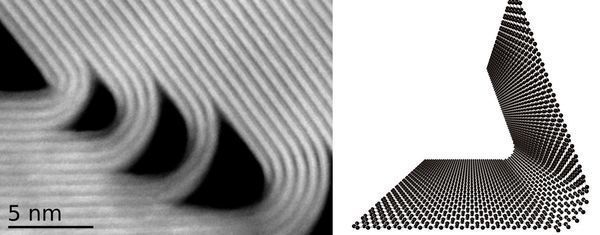
Understanding Origami in 2D Materials
"One in five mobile phone users in the UK have cracked their screen by dropping the phone in a three year period, according to a YouGov poll. The mobile screens break easily because they are usually made from an oxide material which allows the touch screen to function but breaks easily. In contrast, graphene and other 2D materials could also function as efficient mobile touch screens but are highly bendable. These materials therefore promise to revolutionise flexible electronics with the potential to produce unbreakable mobile phone displays. Due to material flexibility 2D materials are already finding application in advanced composite materials used to optimise the performance of sports equipment such as running shoes, skis or tennis rackets and to reduce the weight of vehicles. Electronics applications could also benefit from new robust 2D materials such as graphene." [...]
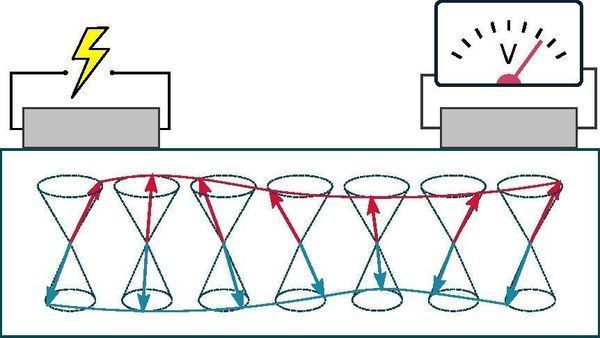
New devices based on rust could reduce excess heat in computers
"Physicists explore long-distance information transmission in antiferromagnetic iron oxide Scientists have succeeded in observing the first long-distance transfer of information in a magnetic group of materials known as antiferromagnets. These materials make it possible to achieve computing speeds much faster than existing devices. Conventional devices using current technologies have the unwelcome side effect of getting hot and being limited in speed. This is slowing down the progress of information technology. The emerging field of magnon spintronics aims to use insulating magnets capable of carrying magnetic waves, known as magnons, to help solve these problems. Magnon waves are able to carry information without the disadvantage of the production of excess heat." [...]
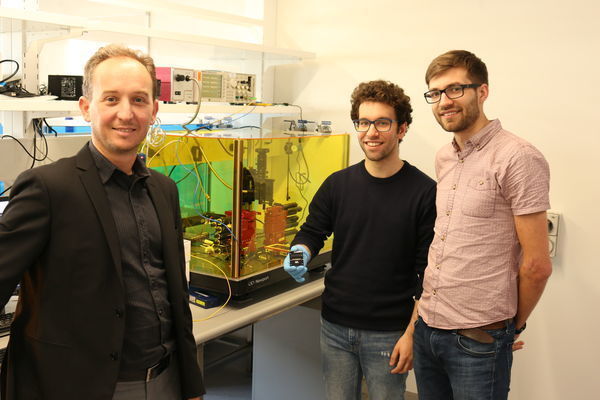
New photonic chip promises more robust quantum computers
"Scientists have developed a topological photonic chip to process quantum information, promising a more robust option for scalable quantum computers. The research team, led by RMIT University’s Dr Alberto Peruzzo, has for the first time demonstrated that quantum information can be encoded, processed and transferred at a distance with topological circuits on the chip. The research is published in Science Advances. The breakthrough could lead to the development of new materials, new generation computers and deeper understandings of fundamental science. In collaboration with scientists from the Politecnico di Milano and ETH Zürich, the researchers used topological photonics – a rapidly growing field that aims to study the physics of topological phases of matter in a novel optical context – to fabricate a chip with a ‘beamsplitter’ creating a high precision photonic quantum gate. “We anticipate that the new chip design will open the way to studying quantum effects in topological materials and to a new area of topologically robust quantum processing in integrated photonics technology,” says Peruzzo, Chief Investigator at the ARC Centre of Excellence for Quantum Computation and Communication Technology (CQC2T) and Director, Quantum Photonics Laboratory, RMIT." [...]
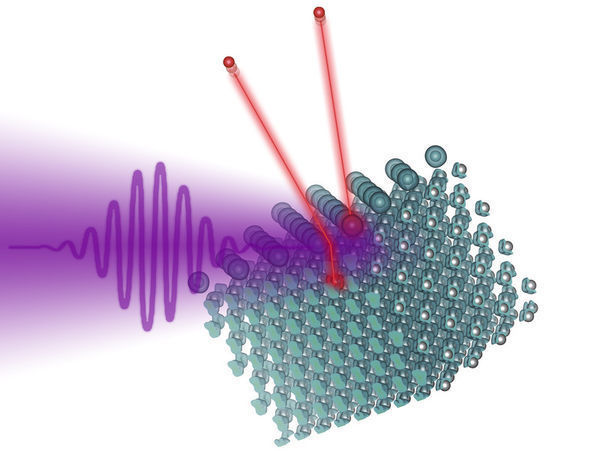
How Long does a Quantum Jump Take?
"With the help of sophisticated experiments and calculations by the Vienna University of Technology, it has now become possible to measure the duration of the famous photoelectric effect. It was one of the crucial experiments in quantum physics: when light falls on certain materials, electrons are released from the surface. Albert Einstein was the first to explain this phenomenon in 1905, when he spoke of "light quanta" - the smallest units of light that we call photons today. In tiny fractions of a second, an electron of the material absorbs a photon, "jumps" into another state and leaves the surface. This "photoelectric effect" is so fast that until now it has mostly been regarded as instantaneous - as a sudden change of state, from one moment to the next. However, new measurement methods are so precise that it has now become possible to observe such a process and to measure its duration precisely." [...]

Panasonic Develops the Technology to Visualize Movement of the Lithium Ions in the Next-Generation Batteries During the Charging and Discharging Processes
"Panasonic Corporation succeeded in regionally fixed quantitative visualization of the two-dimensional distribution of the lithium ions (hereafter "Li-ions") in the LiCoO2 cathode for the first time in the world by charging and discharging the all-solid-state lithium ion battery in the scanning transmission electron microscope (STEM) (*1) and by using the electron energy-loss spectroscopy (EELS) (*2) and the advanced image analysis techniques (multivariate analysis techniques) in collaboration with Japan Fine Ceramics Center and Nagoya University. (See [Fig.].) Through this observation, it became clear that ununiformly distributed Li in the LiCoO2 cathode had effects also on movement of the Li-ions during the charging and discharging processes. It was also found that the Li-ion concentration was low and lots of Co3O4 coexisted around the interface near the solid electrolyte. It is hoped that this will make clear the cause of the Li-ions' high transport resistance at the interface and lead to a big step toward commercialization of the next-generation batteries. This achievement was reported in the online edition of the journal "Nano Letters" on August 21, 2018." [...]
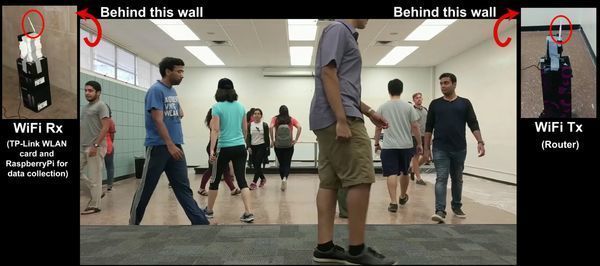
Crowd Counting Through Walls with WiFi
"A new method proposed by UCSB researchers has enabled crowd counting through walls using only WiFi Researchers in UC Santa Barbara professor Yasamin Mostofi’s lab have given the first demonstration of crowd counting through walls using only everyday communication signals such as WiFi. The technique, which requires only a wireless transmitter and receiver outside the area of interest, could have a variety of applications, including smart energy management, retail business planning and security. “Our proposed approach makes it possible to estimate the number of people inside a room from outside,” said Mostofi, a professor of electrical and computer engineering at UC Santa Barbara. “This approach utilizes only WiFi RSSI measurements and does not rely on people to carry a device.” The proposed methodology and experimental results were presented at the 2018 IEEE 2018 15th Annual IEEE International Conference on Sensing, Communication, and Networking (SECON) In the team’s experiments, one WiFi transmitter and one WiFi receiver are behind walls, outside a room in which a number of people are present. The room can get very crowded with as many as 20 people zigzagging each other. The transmitter sends a wireless signal whose received signal strength (RSSI) is measured by the receiver." [...]
Modelos 3D
Com a disponibilidade de ferramentas que permitem dar azo a nossa imaginação na criação de peças 3D e espaços como o thingiverse para as publicar, esta rubrica apresenta alguns modelos selecionados que poderão ser úteis.
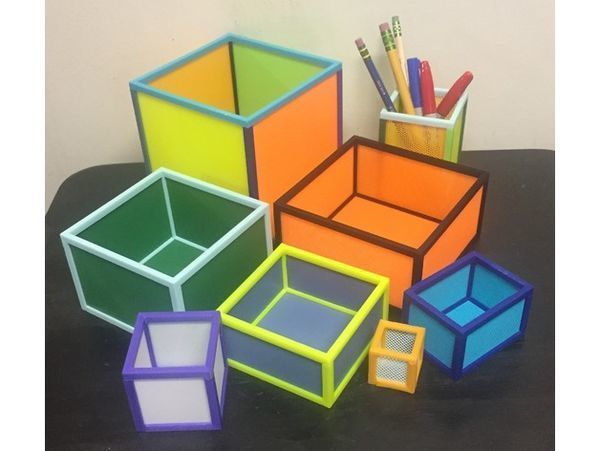
Panel Box, customizable
"I initially made this in Tinkercad then I made a customizable .SCAD file in OpenSCAD. a box is made of 6 different parts - 10 pcs total "CORNERL_LH" - (corner L - length & height) - need 2 pcs "CORNERL_WH" - (corner L - width & height) - need 2 pcs "RIM" - (rim around top) - need 1 pc "PANEL_LH" - (side panel - length & height) - need 2 pcs "PANEL_WH" - (side panel - width & height) - need 2 pcs "PANEL_B" - (bottom panel - with feet or no feet) - need 1 pc Support is needed for CornerL pcs but not for Panels or Rim. All pieces are solid. No infill. I figured strength would be necessary so I didn't even try it otherwise. I ran CornerL pcs & Rim a little hotter than normal for better layer adhesion because the square pins broke off in early versions." [...]

Parametric Propeller
"I designed this customizable propeller file for my Mini Underwater ROV project but these propellers can be used for anything from RC boats to fan blades. You can customize everything from size to shape to your liking using the customizer app. I also uploaded 2 stl files designed for a 2mm motor shaft. The first propeller has a 40mm total diameter and the second is 50mm. " [...]
Documentação
A documentação é parte essencial do processo de aprendizagem e a Internet além de artigos interessantes de explorar também tem alguma documentação em formato PDF interessante de ler. Todos os links aqui apresentados são para conteúdo disponibilizado livremente pelo editor do livro.
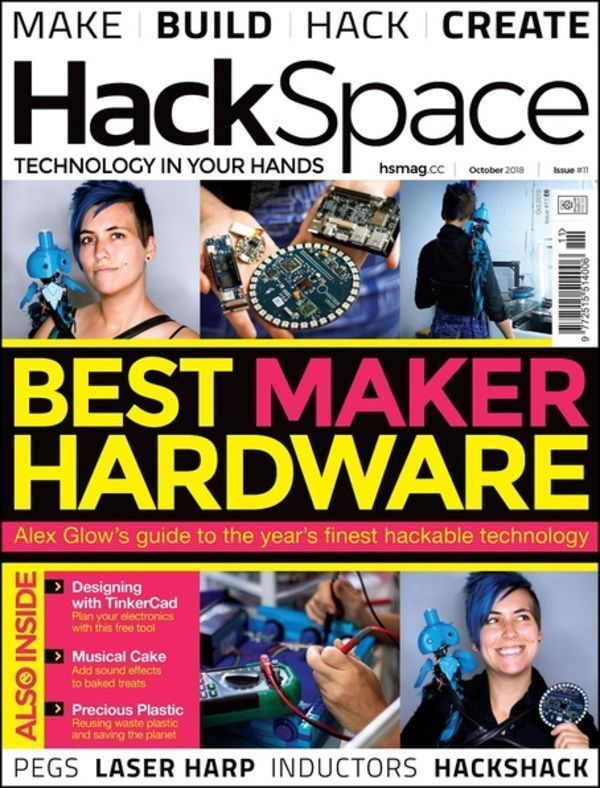
HackSpace magazine #11
"Maker hardware – there's so much around right now, but how do you pick the best bits for your projects? We've enlisted the help of Alex Glow, hardware nerd at Hackster to help. We also make a Midi cake, visit Al's Hack Shack, simulate circuits with TinkerCad and more. Laser harp Electronics 101: Inductors Makers recycling plastic waste Bodging with clothes pegs And much, much more! " [...]

Hello World issue 6
"Hello World issue 6 brings together a collection of experts, who address the challenges of ethics, and how that affects and underpins the teaching of computer science. They share ideas, thoughts and experiences, and look at how to inspire students, whilst grounding them in an ethical ethos. Also in this issue: Bringing Minecraft – and a bicycle! – to the classroom The Hitchhiker’s Guide to KS3 computing Using Escape Rooms to improve problem-solving skills What’s turning girls off computer science? " [...]
Projetos Maker
Diversos Projetos interessantes.
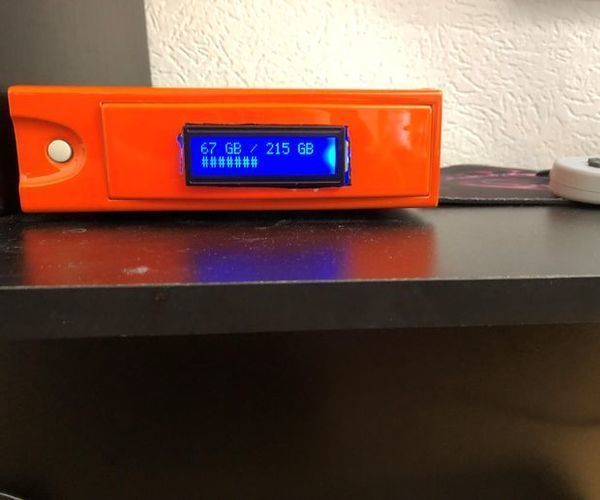
OrangeBOX: OrangePI Based Secure Backup Storage Device
"The OrangeBOX is an all-in-one remote storage backup box for any servers. Your server can be infected, corrupted, wiped and all your data is still secure on the OrangeBOX and who wouldn't like a mission impossible like backup device what you just plug in and see a progress indicator without doing anything more (just hope the magic smoke will not come out at the end:)). The OrangeBOX is my first project which is mostly a software, not a hardware hack. It is basically a custom built NAS with an LCD attached. " [...]

Fizzle Loop Synth II
"This is my 2nd version of the fizzle loop synth and this time I use 4 x 555 times (yes you heard me right!) Its circuit is really just 2 flashing LED circuits and also a light Theremin circuit mashed together. Ive added a potentiometer to each LED to be able to dim it along with the ability to change capacitor and resistor values via switches. This gives you the ability to change the sound, tone and speed of the synth making for a much more varied sound machine then the first Fizzle Loop synth. I also used 2 vactrols (check out step 3 on what these are if you havent heard of them before) which connect the flashing LEDs circuits to the light Theremin circuit. After a bit of experimenting I found that the values on the resistors and caps I choose gave me a good range of sound." [...]

Control Your Dslr Camera With An Arduino Intervalometer
"DSLR cameras capture incredible photos, and they can store thousands of images on a micro SD card no bigger than a fingernail. Modern smartphone cameras can take and save high-quality images as well, but users can’t select the appropriate lens for a situation and control the aperture, shutter speed, and ISO setting directly. Features like these give skilled DSLR users the ability to set up a shot to their exact specifications. These cameras are also compatible with a wide variety of accessories like intervalometers, which release the camera’s shutter at controlled intervals. If you’ve ever seen a video with stars moving across the night sky, or a seed germinating and growing into a young plant, then you have seen an intervalometer in action. This style of photography is called time-lapse." [...]
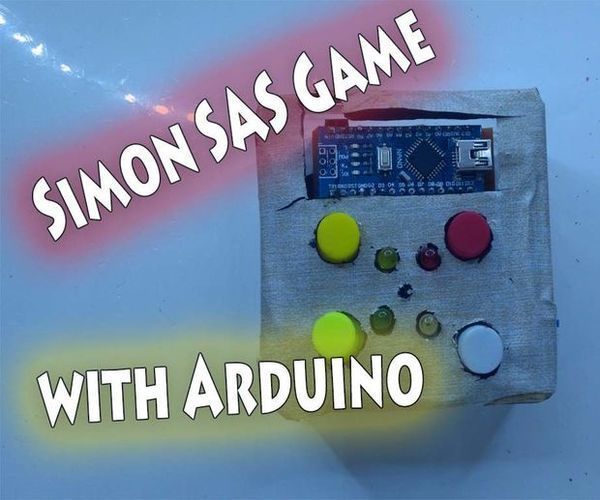
Simon Says Game With Arduino
"DIY Simon Says Game with Arduino , i will show you how to make a Simon Says Game using an Arduino , it's very simple , I'm suing Arduino Nano ," [...]
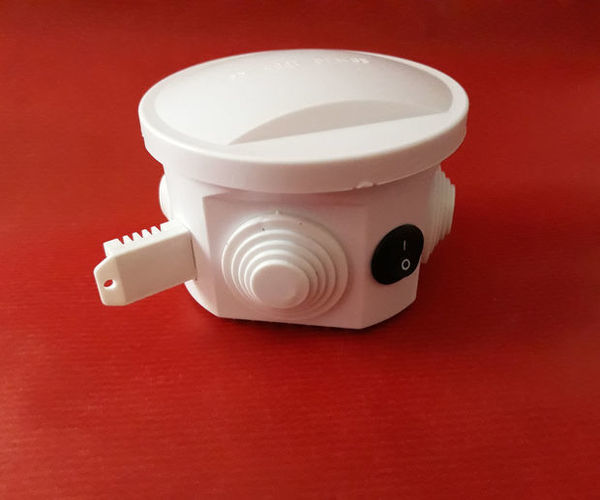
Meteorino: Extend Battery Life on NodeMCU? Just Switch It Off.
"Meteorino is just a simple stand-alone, unmanned, temperature/humidity reporting system. But I would like to share with you all my designing/developing/constructing experience as I am sure I have faced with problems everyone has when trying to set up a generic WiFi sensor meter that should work uninterruptedly 24/7. The results can easily be inherited by any similar project (with NodeMCU or equivalent) when a microcontroller is needed to send data over WiFi during discrete and short intervals per hour. " [...]
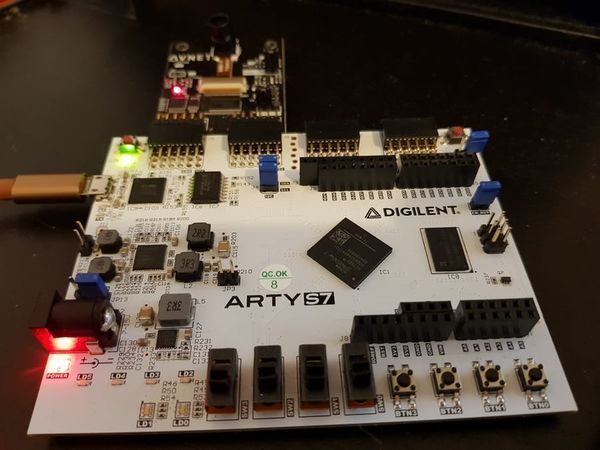
Creating an FPGA-Based Low-Cost Imaging System
"Not all imaging systems need to be expensive. Solutions can be created using cost optimized FPGA and CMOS image sensors directly. Story Introduction Developing an embedded vision system does not require the use of an expensive FPGA or SoC, large frame buffer memories and a external camera. We can develop a very powerful image processing system using a cost optimized FPGA / SoC interfacing directly with a CMOS sensor. This allows a solution to be created which is not only achieves cost targets but also one which is compact and power efficient. Interfacing directly with a sensor is different to interfacing with a camera as we have done previously." [...]
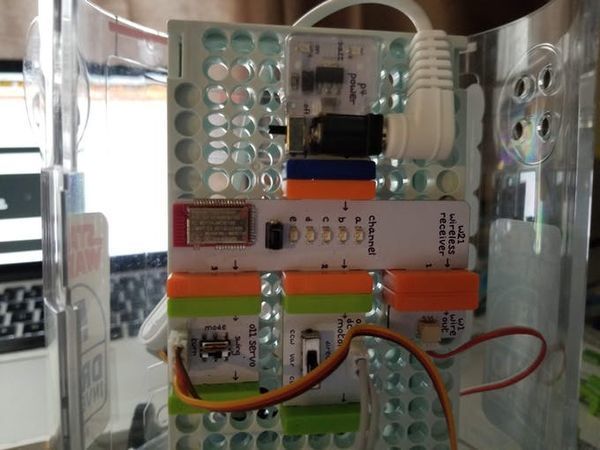
Accessibility Controls for Droids
"Accessibility is important. This project uses facial gestures to control a droid remotely using augmented reality capabilities of Facebook. I built a proof of concept device to solve accessibility in robotics using augmented reality. I used an Arduino kit and Facebook AR Studio to control a littleBits Droid. My goal is to encourage everyone to think about Industry 4.0 as expanding the reach of technology to enable more people to participate in this digital transformation. Story When I first learned about the Arduino / Distrelec: Automation & Robotics Contest here on Hackster, I started researching about Industry 4.0 How can we advance our robots and manufacturing systems using augmented reality technologies." [...]
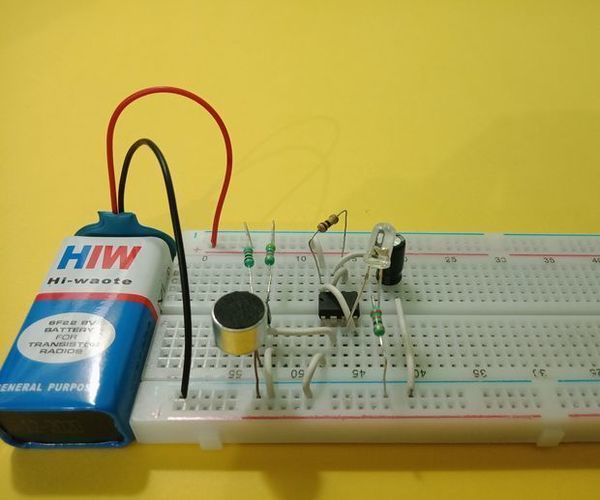
Two Transient Clap Switch Circuits
"Transient Clap Switch Circuit is the circuit which turns ON with a clap sound. The output remains ON for some time and then turns OFF automatically. The time of activity can be controlled by varying the value of capacitance of Capacitor. More the capacitance, more is the time for which the output remains ON. A condenser microphone is used as a sensor. The trigger can be clap/snap or any other sound capable of activating the circuit." [...]
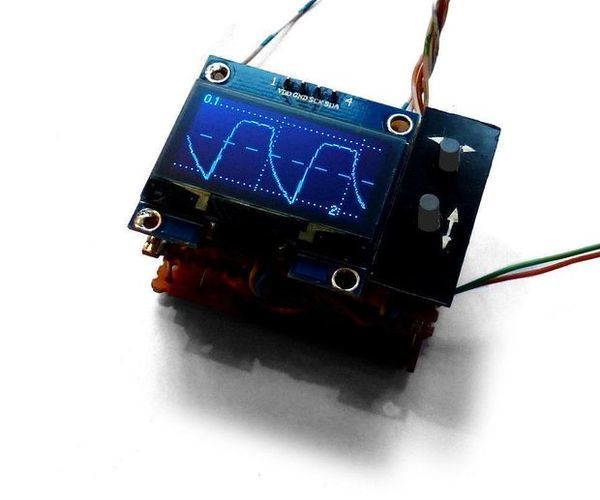
Oscilloscope in a Matchbox - Arduino
"Why would I want a tiny oscillscope? I've got a room full of electronic Stuff including four oscillscopes. But it's a fuss using them. It would be nice to have something that fits in my pocket, that sits next to the circuit I'm working on and that's as easy to use as a multimeter. This oscilloscope costs the price of an Arduino Nano (£2 and a display (£3) plus a few pence for resistors, etc. It's specification is: max 1M samples/second, min 1000sps 8-bits per sample DC 0-5V; AC +/- 550mV, AC +/- 117mV, AC +/- 25mV USB "PC scope" or built-in display could be battery-powered optional logic display optional frequency meter optional voltmeter Mostly what I want from an oscilloscope is to know: is the signal present?" [...]
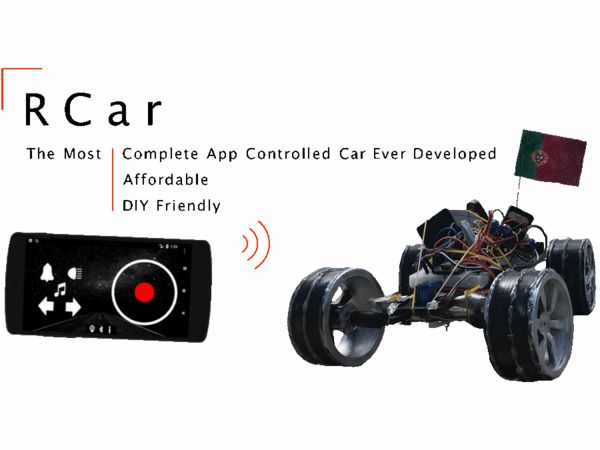
RCar | Robots for All!
"We created a low-cost RC car and an Android app (free) that is able to control many of its features using a Bluetooth connection. Project Statement We live in a rapidly changing world. People are now more connected than never. Technology is becoming exponentially powerful. Although, surprisingly, there are still enormous inequalities among nations and minorities sometimes stopped from following their dreams. RCar project will not solve this issue, but it is a remind about the importance of gathering people and fight for a fair world." [...]

Timer Delay Using IC-555
"This is timer delay circuit using ic-555. Component required : Small PCB IC555 Resistor : 10k, 100K, 4.7K Capacitors: 0.01 uf, 470uF" [...]
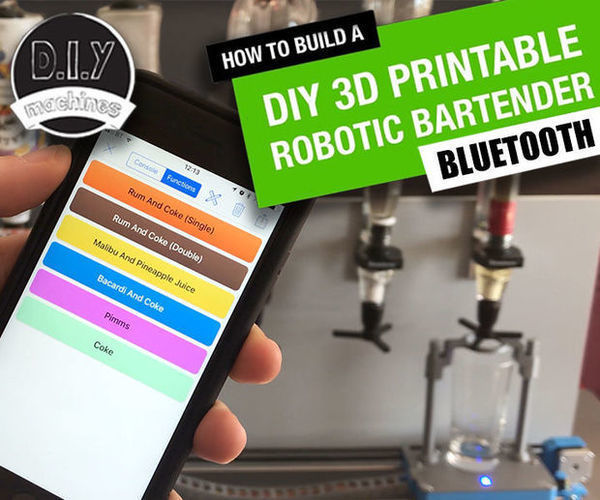
Arduino Robotic Bartender - 3D Printable & Bluetooth
"Intro: Arduino Robotic Bartender - 3D Printable & Bluetooth Build yourself a low-cost easy to assemble bluetooth controllable robotic bartender using an Arduino Uno. This easy Arduino based project can be 3D printed and is a cool Arduino project for beginners. The aim of this project was to create a bar robot that was low cost and easy for anyone to write their own programme for. Many others out there soon get very expensive and often requires mains electrics - this is cheaper by design and runs entirely on 8 AA batteries. (Also makes it easy to take into the garden or a friends place). List of items used in this project and where to find them (the links are Amazon affiliate links and financially support this channel at no cost to you) Arduino Uno: http://geni.us/ArduinoUno Motor driver: http://geni.us/ArduinoUno Contact Switch: http://geni.us/ArduinoUno Linear Bearings: http://geni.us/ArduinoUno Stepper Motor: http://geni.us/ArduinoUno Timing Belt and Pulley (2m version): http://geni.us/ArduinoUno Timing Belt and Pulley (5m version): http://geni.us/ArduinoUno HM10 Bluetooth Module: http://geni.us/HM10Bluetooth" [...]

Automated Password Typer
"Now you don't have to remember any of your passwords, and they are still safe and ready to use! Most of us use loads of services where a login is required. Therefore we have passwords that we have to remember. As it is bad practise to use the same password everywhere, it might become difficult to remember all the difficult combinations. So I decided to use an Arduino to automate the password-typing process and stored the password securely in the microcontroller. Note that once a microcontroller has a sketch in it, it is impossible to access any information within the uploaded sketch and so hackers can't get access to the passwords stored in the microcontroller's memory." [...]
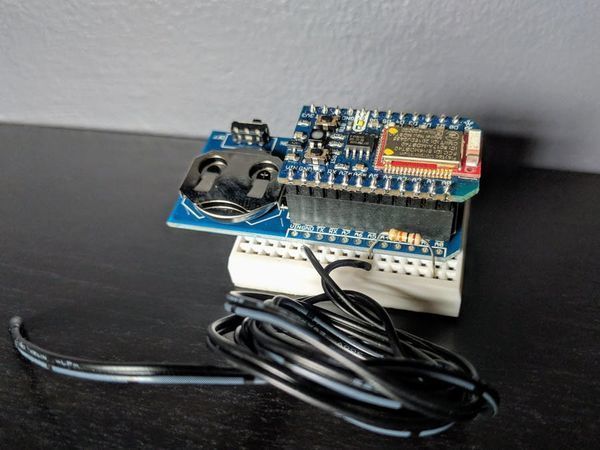
Bluz Wireless Temperature Sensor
"Add that much needed remote temperature sensor wherever you want, no wall outlet required. Story I recently needed to add a remote temperature sensor to my Minimalist Thermostat and I decided to make it with a Bluz Development Kit (Bluz DK from now on). What are we going to build here? We are going to build a low power, BLE (Bluetooth Low Energy) remote temperature sensor connected to the internet so we can access its reading from anywhere. So, what is bluz? From their site: Bluz is a development kit that acts like an Arduino, but has Bluetooth Low Energy (BLE) communication built-in." [...]
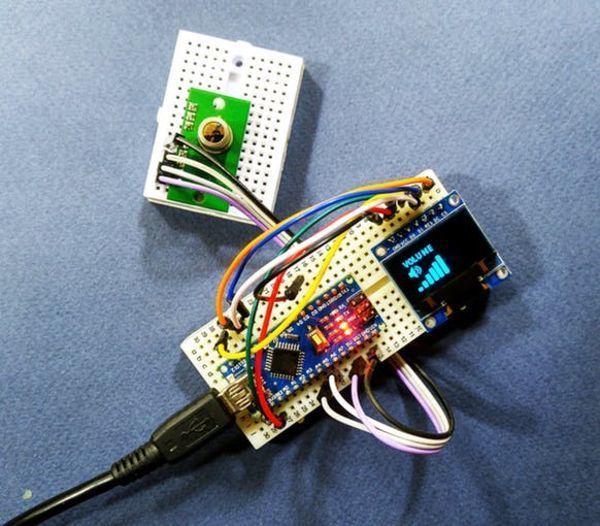
Easy Motion and Gesture Detection by PIR Sensor & Arduino
"Here we use PIR sensor and Arduino to detect the motion of a hand. This detection can be used to operate electronic equipment. Story In this article, we’ll show you how to make a gesture detector by simple components like PIR sensor and Arduino Nano. At the end of this article you can: Explain PIR sensor applications and how it works Run an 8-Pixel PIR sensor named TPA81 Use PIR sensor to detect motion and gesture by Arduino Make a cool detector to increase or decrease your speaker volume" [...]

Indoor Air Quality Monitoring System
"An indoor air quality monitoring system for detecting toxic gases. Story Introduction Indoor air pollution has been consistently ranked by the US Environmental Protection Agency (EPA) and its Science Advisory Board to be among the top five environmental public health risks. Average person spends an estimated 90% of their time indoors so that poor indoor air quality (IAQ) poses a substantial risk to public health. Poor air quality may cause increased short-term health problems such as fatigue and nausea as well as chronic respiratory diseases, heart disease, and lung cancer. It is estimated that annual costs and productivity losses in US is $10 to $20 billion related to sick building syndrome, which is defined to describe acute health and discomfort effects that appear to be linked to poor indoor air quality and the time spent in a building. In this project we are going to present an Indoor air quality monitoring system, Our system is connected with Internet as a result anyone can remotely visualize the air quality index form anywhere." [...]
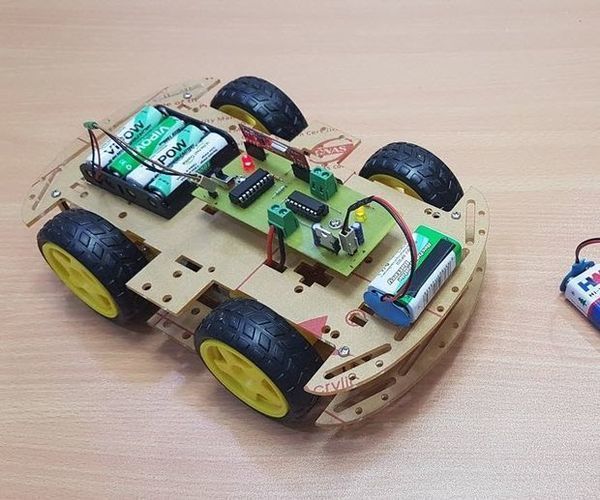
Gesture Controlled Wireless Car
"In this tutorial we are going to learn, how to make a gesture controlled car or any robot. This project has two part, one part is transmitter unit and other part is receiver unit. Transmitter unit is actually mounted on a hand gloves and receiver unit is placed inside a car or any robot. Now its time to make a nice car. Lets go! " [...]

Otto DIY+ Arduino Bluetooth Robot Easy to 3D Print
""Otto DIY with steroids" + Bluetooth + APP + switch + touch sensors + strength + sound detection... Otto DIY + would be the improved and advanced version of original #OttoDIY, the idea is to have the same base features DIY robot + Bluetooth control and programming + metal gear servo motors + optional rechargeable + changing modes by touch sensors + sound sensor + RGB light + other outputs +...? " [...]

Robot Arm Using Arduino Mega and ROS
"The idea is to create a robotic arm which can perform pick and place objects using object recognition. Story Robot Arm (5 DOF) Using Arduino Mega2560 and ROS Note: Knowledge of ROS basics, TF and URDF is must. The idea is to create a robot arm that can perform pick and place objects using object recognition. I used Arduino Mega 2560 along with RAMP 1.4 for connecting motors, performing task. I used an external library called AccelStepper for motion control of the stepper motors. Arduino is connected with PC serially which has ROS for visualization, planning trajectory of robotic arm along with tensorflow and opencv for object detection." [...]
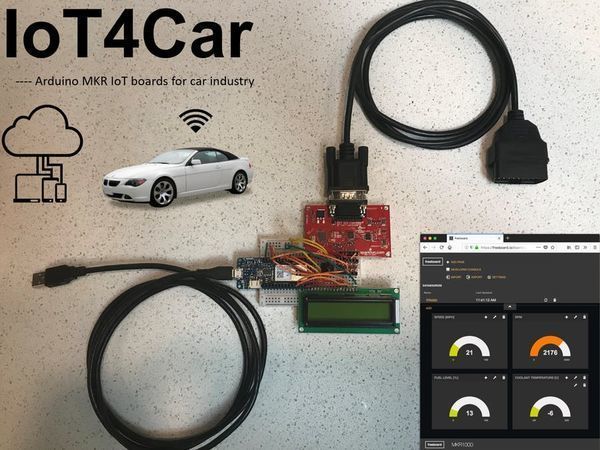
IoT4Car
"MKR WiFi 1000 talks to a car through OBD-II interface, and uploads the data to IoT cloud for real-time monitoring and post-processing. Story Background When driving your vehicle, glancing at your dashboard, have you ever thought of collecting the meter readings and do some analysis? These data may contain hidden treasures. For individuals, it can reflect your driving habits, it can tell you your speed, your average mpg, how many traffic lights you have, and your waiting time at each cross. For companies, these data are critical for real-time monitoring in fleet management. Vehicle condition, work load distribution, gasoline efficiency, and even vehicle location can all be fed back to a central control system through cloud." [...]
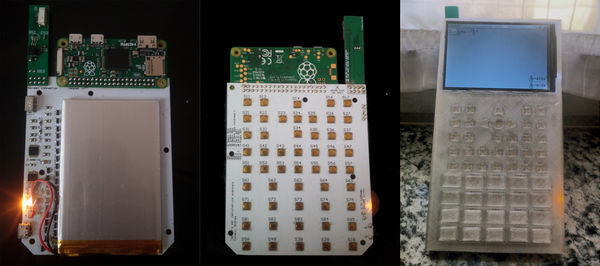
WarpPI Calculator
"Step-by-step algebra calculator for Raspberry PI. This project is experimental and strictly related to my calculator, designed to run on an embedded hardware. It works but many fundamental features aren't complete. If you really want to build and test it on your computer take account of that. " [...]
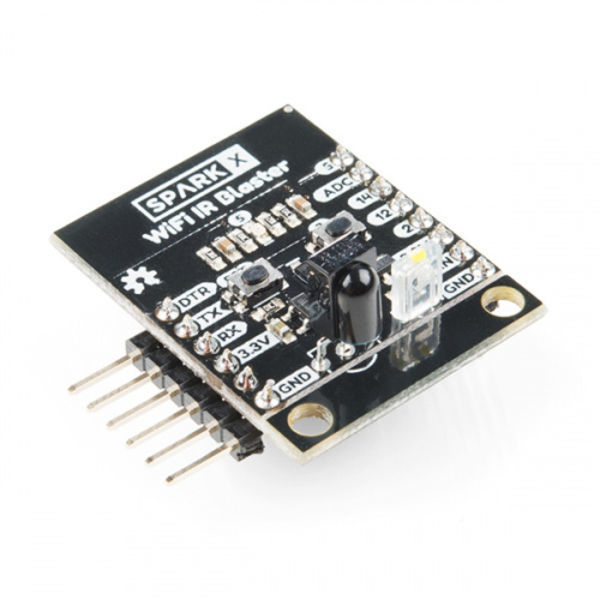
WiFi IR Blaster Hookup Guide
"With the advent of WiFi-connected “smart” devices, IR remotes are quickly becoming a thing of the past. Why sort through a coffee table-full of remotes when you probably have a much smarter, WiFi-connected device device sitting conveniently in your hand? The WiFi IR Blaster is designed to connect all of those old, legacy IR-controlled devices to a WiFi network – exposing them to a new method of control. Want to control your TV via a web-browser? Want to ask Alexa to mute your stereo? Want to schedule triggers to your IR-controlled LED strip?" [...]
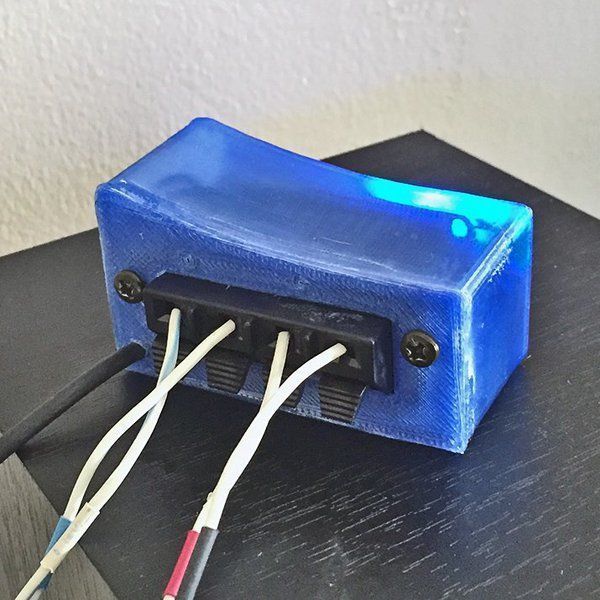
Center Surround Sound
"Make You The Center of Your World When settling speakers in to place, you are idealizing that you will always sit dead center .. yet in our more lethargic reality, we lounge off-center. As consequence, you cease being the center of the speaker array .. until now .. Notations 1. Intended to create an app with MIT App Inventor .. how ever .. per the previous HaD FP (Voice Kitchen Faucet) .. it was decided to employ an alternative favored open source (-ish) voice command software http://voiceattack.com purely as demonstration. 2. Adding additional speakers merely requires copy-paste and if-statement modifications .. tho ideally a more advanced 'find' function upon installation would be coded." [...]

Pick and Place Robot Arduino - Spinel Crux L2
"Amazing pick and place robot using Arduino and robotic arm – awesome new cool looking robot that can pick, place and move objects around it! Story After the grand success of the Spinel Crux in the Arduino Robotics workshop, we started working on an add on, which can be placed on top the Spinel Crux – A Robotic Arm, controlled using hand gestures/joystick. A pick and place robot using Arduino and a cool robotic arm, with 4 DOF (degrees of freedom). Spinel Crux was one of our most successful project that was well received within our RootSaid community as well as outside groups. It was a discussion topic that has been going around for more than a month. About the Spinel Crux V1 For those who dont know what the Spinel Crux is, Spinel Crux is a remote control gesture controlled robot which can be used for Wireless surveillance in rough terrain and hostile situations." [...]
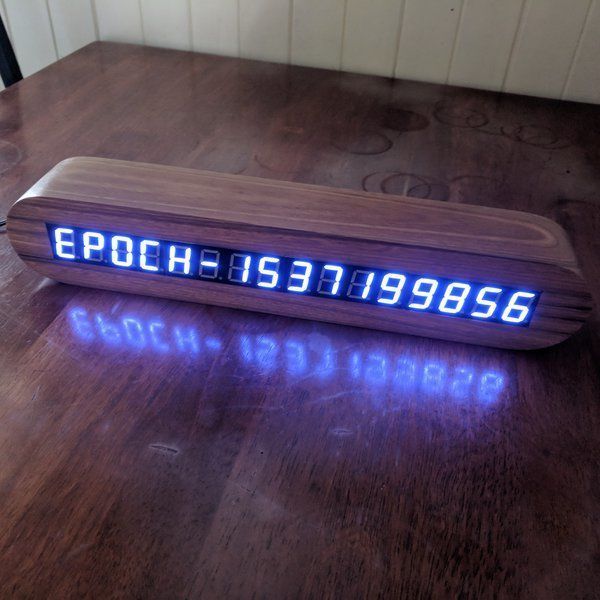
gps_clock
"A 16x7-Segment LED Clock that syncs time from GPS satellites. I read somewhere about UNIX Epoch time (https://en.wikipedia.org/wiki/Unix_time) and thought wouldn't it be neat to have a clock that showed time in this format? This project developed from that idea.I had a dis-used GPS module with serial output so I thought it would also be cool to use that for syncing the time and thus avoiding setting the clock manually. The final clock has the following features and characteristics: - 16 digit 7-segment LED display. - Date/Time display EPOCH format (seconds elapsed since 1970-01-01). - Date/Time display ISO-8601 format ((YYYY.MM.DD.HH.MM.SS)." [...]

Python Powered Spectrophotometer!
"Welcome to another instructable. In this instructable I will discuss how to make a crude spectrophotometer. I will show you what sensors work best, and how to use Python for dynamically updating and displaying the data. Overall I will be evaluating how effective or useful this will be to hobbyists, who want to learn more about it. I personally had no idea how one worked so I thought I'd research the idea. At the time I was particularly interested in finding out how much chlorine was in my drinking water (my tap water has a chlorine smell/taste when I use it to make coffee)." [...]

ESP32 Bluetooth Low Energy
"To fulfill the requests of several followers who have experience with small models of Arduino Bluetooth, today well discuss ESP32 Bluetooth Low Energy. This is highly recommended for the Internet of Things. The Arduino TX RX model works as a serial; but the subject today is a bit different. This is because its power consumption is miniscule. Let us therefore find out more about the BLE and create a program for ESP32 to become a Bluetooth server. This will connect a smartphone application to send and receive data." [...]
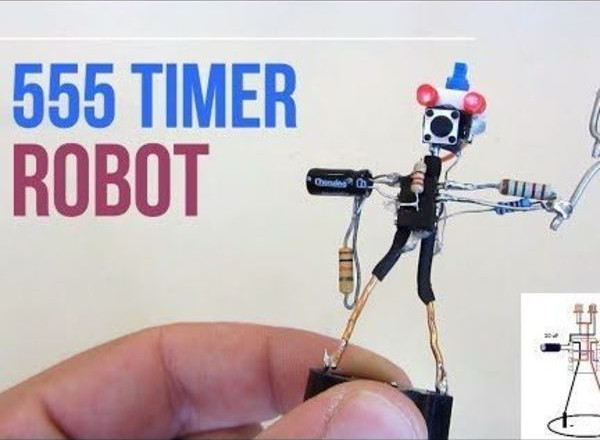
555 Timer Robot
"Another circuit with famous 555 chip. I decided to make a toy robot with blinking eyes. It is easy and fun to make.. This project is great soldering practice. Great beginer project or toy for your kid scientist. My kids love it, they want to make couple of them , and they are caling them terminators :) ." [...]

Portable soldering iron V2.0
"A few weeks ago we had the first version of this project, the portable soldering iron V1.0 and that had a few problems. The main problem was the soldering tip that I've used. It was very low quality but I wanted that tip because it had the thermocouple and heating element with separated wires. But now, I've got a much better tip, the T12. This one has the thermocouple and heating element in series so the circuit is different and the temperature sensing as well. But the results are MUCH better." [...]
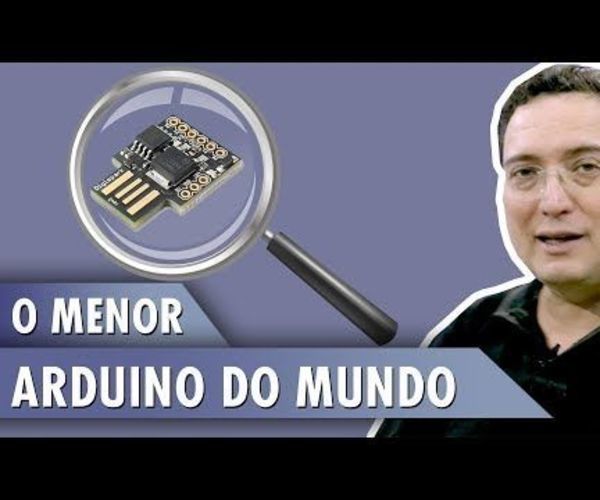
ATTINY - the World's Smallest Arduino
"This will be another video about Arduino, my friends. We wont be speaking about the biggest Arduino this time, but rather the worlds smallest Arduino: Attiny85! Let's prepare the Arduino IDE to work with Digispark's Attiny85 module and implement a temperature and humidity monitor with the possibility of an adjustable trigger. Our assembly is very simple: we have the well-known DHT22; the Attiny85, a chip that can be smaller than the SMD voltage regulator; and an i2c OLED display. I want to make it clear that I chose the Attiny85 module from Digispark because I found it easier to handle, but it is fine if you want to program only the Attiny chip. However, you'll need a serial USB converter." [...]

WiFi Smart Power Strip With NodeMCU
"This is an easy-to-do and quite cheap WiFi Smart Strip that can control 4 sockets independently from all around the world from your smartphone, tablet or computer. Everything you need is an internet connection. You can use it for christmas lights, or fan or everything you want to plug in! " [...]
Midi Controller Button-Keyboard
"Inspired by my midifighter project, I set out to make a button style midi controller that takes advantage of the many digital inputs that the Mega Arduino board has. In this Instructable we will walk through the steps taken from gathering materials to making music! " [...]
That's all Folks!


